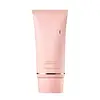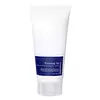What's inside
What's inside
 Key Ingredients
Key Ingredients

 Benefits
Benefits

 Concerns
Concerns

 Ingredients Side-by-side
Ingredients Side-by-side

Water
Skin ConditioningHomosalate
Skin ConditioningEthylhexyl Methoxycinnamate
UV AbsorberDipropylene Glycol
HumectantAlcohol Denat.
AntimicrobialEthylhexyl Salicylate
UV AbsorberButylene Glycol
HumectantButyl Methoxydibenzoylmethane
UV AbsorberNiacinamide
SmoothingBis-Ethylhexyloxyphenol Methoxyphenyl Triazine
Skin ConditioningDibutyl Adipate
EmollientGlycerin
HumectantOctocrylene
UV AbsorberPentylene Glycol
Skin ConditioningCurcuma Longa Root Extract
MaskingEclipta Prostrata Extract
Skin ConditioningMelia Azadirachta Flower Extract
Skin ConditioningMoringa Oleifera Seed Oil
EmollientCorallina Officinalis Extract
Skin ConditioningMelia Azadirachta Extract
Skin ConditioningOcimum Basilicum Leaf Extract
Skin ConditioningHydrolyzed Collagen
EmollientCanola Oil
EmollientCaesalpinia Spinosa Fruit Extract
Skin ProtectingLactobacillus/Rye Flour Ferment
Skin ConditioningLactobacillus/Soymilk Ferment Filtrate
Skin ConditioningBacillus/Soybean Ferment Extract
Skin ConditioningChlorella Vulgaris Extract
Skin ConditioningKappaphycus Alvarezii Extract
Skin ConditioningDaucus Carota Sativa Seed Oil
EmollientSodium Hyaluronate
HumectantAlthaea Rosea Flower Extract
Skin ConditioningDaucus Carota Sativa Root Extract
Skin ConditioningHelianthus Annuus Seed Oil
EmollientHyaluronic Acid
HumectantHydrolyzed Hyaluronic Acid
HumectantPolymethylsilsesquioxane
Silica
AbrasiveSodium Acrylate/Sodium Acryloyldimethyl Taurate Copolymer
Emulsion StabilisingIsohexadecane
EmollientGlyceryl Stearate
EmollientPEG-100 Stearate
Caprylyl Glycol
EmollientAcrylates Copolymer
Polysorbate 80
EmulsifyingEthylhexylglycerin
Skin ConditioningAdenosine
Skin ConditioningSorbitan Oleate
EmulsifyingTocopherol
AntioxidantCeramide AP
Skin Conditioning1,2-Hexanediol
Skin ConditioningSoluble Proteoglycan
Skin ConditioningSodium Dna
Skin ConditioningBeta-Carotene
Skin ConditioningTocopheryl Acetate
AntioxidantHydrolyzed Sodium Hyaluronate
Skin ConditioningHydroxypropyltrimonium Hyaluronate
PEG-9 Diglycidyl Ether/Sodium Hyaluronate Crosspolymer
Skin ConditioningPotassium Hyaluronate
Skin ConditioningSodium Acetylated Hyaluronate
HumectantFolic Acid
Skin ConditioningPantothenic Acid
Skin ConditioningPropanediol
SolventPyridoxine
Skin ConditioningThiamine Hcl
MaskingCyanocobalamin
Skin ConditioningHydroxydecyl Ubiquinone
AntioxidantRiboflavin
Cosmetic ColorantDimethylsilanol Hyaluronate
HumectantDisodium EDTA
Sodium Benzoate
MaskingParfum
MaskingBenzyl Salicylate
PerfumingBenzyl Benzoate
AntimicrobialButylphenyl Methylpropional
PerfumingHexyl Cinnamal
PerfumingHydroxycitronellal
PerfumingCitronellol
PerfumingMelia Azadirachta Leaf Extract
Skin ConditioningWater, Homosalate, Ethylhexyl Methoxycinnamate, Dipropylene Glycol, Alcohol Denat., Ethylhexyl Salicylate, Butylene Glycol, Butyl Methoxydibenzoylmethane, Niacinamide, Bis-Ethylhexyloxyphenol Methoxyphenyl Triazine, Dibutyl Adipate, Glycerin, Octocrylene, Pentylene Glycol, Curcuma Longa Root Extract, Eclipta Prostrata Extract, Melia Azadirachta Flower Extract, Moringa Oleifera Seed Oil, Corallina Officinalis Extract, Melia Azadirachta Extract, Ocimum Basilicum Leaf Extract, Hydrolyzed Collagen, Canola Oil, Caesalpinia Spinosa Fruit Extract, Lactobacillus/Rye Flour Ferment, Lactobacillus/Soymilk Ferment Filtrate, Bacillus/Soybean Ferment Extract, Chlorella Vulgaris Extract, Kappaphycus Alvarezii Extract, Daucus Carota Sativa Seed Oil, Sodium Hyaluronate, Althaea Rosea Flower Extract, Daucus Carota Sativa Root Extract, Helianthus Annuus Seed Oil, Hyaluronic Acid, Hydrolyzed Hyaluronic Acid, Polymethylsilsesquioxane, Silica, Sodium Acrylate/Sodium Acryloyldimethyl Taurate Copolymer, Isohexadecane, Glyceryl Stearate, PEG-100 Stearate, Caprylyl Glycol, Acrylates Copolymer, Polysorbate 80, Ethylhexylglycerin, Adenosine, Sorbitan Oleate, Tocopherol, Ceramide AP, 1,2-Hexanediol, Soluble Proteoglycan, Sodium Dna, Beta-Carotene, Tocopheryl Acetate, Hydrolyzed Sodium Hyaluronate, Hydroxypropyltrimonium Hyaluronate, PEG-9 Diglycidyl Ether/Sodium Hyaluronate Crosspolymer, Potassium Hyaluronate, Sodium Acetylated Hyaluronate, Folic Acid, Pantothenic Acid, Propanediol, Pyridoxine, Thiamine Hcl, Cyanocobalamin, Hydroxydecyl Ubiquinone, Riboflavin, Dimethylsilanol Hyaluronate, Disodium EDTA, Sodium Benzoate, Parfum, Benzyl Salicylate, Benzyl Benzoate, Butylphenyl Methylpropional, Hexyl Cinnamal, Hydroxycitronellal, Citronellol, Melia Azadirachta Leaf Extract
Water
Skin ConditioningButyloctyl Salicylate
Skin ConditioningPropanediol
SolventPropylheptyl Caprylate
EmollientPolyglyceryl-4 Diisostearate/Polyhydroxystearate/Sebacate
EmulsifyingDisteardimonium Hectorite
StabilisingPolyglyceryl-3 Polydimethylsiloxyethyl Dimethicone
Skin ConditioningMagnesium Sulfate
Phenyl Trimethicone
Skin Conditioning1,2-Hexanediol
Skin ConditioningPolymethylsilsesquioxane
Acrylates/Dimethicone Copolymer
Skin ConditioningTriethoxycaprylylsilane
Stearic Acid
CleansingAluminum Hydroxide
EmollientGlyceryl Caprylate
EmollientCaprylyl Glycol
EmollientEthylhexylglycerin
Skin ConditioningTocopherol
AntioxidantCeramide NP
Skin ConditioningSodium Hyaluronate
HumectantButylene Glycol
HumectantDipropylene Glycol
HumectantGlycerin
HumectantCamellia Sinensis Leaf Extract
AntimicrobialArtemisia Princeps Extract
Skin ConditioningUlmus Davidiana Root Extract
Skin ConditioningXanthium Strumarium Fruit Extract
Skin ConditioningSalicornia Herbacea Extract
Skin ConditioningZingiber Officinale Root Extract
MaskingLonicera Japonica Flower Extract
Skin ConditioningPoncirus Trifoliata Fruit Extract
Skin ConditioningSophora Angustifolia Root Extract
Skin ConditioningAllium Sativum Bulb Extract
Skin ConditioningZinc Oxide
Cosmetic ColorantCyclopentasiloxane
EmollientHomosalate
Skin ConditioningEthylhexyl Salicylate
UV AbsorberTitanium Dioxide
Cosmetic ColorantGlycyrrhiza Glabra Root Extract
BleachingWater, Butyloctyl Salicylate, Propanediol, Propylheptyl Caprylate, Polyglyceryl-4 Diisostearate/Polyhydroxystearate/Sebacate, Disteardimonium Hectorite, Polyglyceryl-3 Polydimethylsiloxyethyl Dimethicone, Magnesium Sulfate, Phenyl Trimethicone, 1,2-Hexanediol, Polymethylsilsesquioxane, Acrylates/Dimethicone Copolymer, Triethoxycaprylylsilane, Stearic Acid, Aluminum Hydroxide, Glyceryl Caprylate, Caprylyl Glycol, Ethylhexylglycerin, Tocopherol, Ceramide NP, Sodium Hyaluronate, Butylene Glycol, Dipropylene Glycol, Glycerin, Camellia Sinensis Leaf Extract, Artemisia Princeps Extract, Ulmus Davidiana Root Extract, Xanthium Strumarium Fruit Extract, Salicornia Herbacea Extract, Zingiber Officinale Root Extract, Lonicera Japonica Flower Extract, Poncirus Trifoliata Fruit Extract, Sophora Angustifolia Root Extract, Allium Sativum Bulb Extract, Zinc Oxide, Cyclopentasiloxane, Homosalate, Ethylhexyl Salicylate, Titanium Dioxide, Glycyrrhiza Glabra Root Extract
 Reviews
Reviews

Ingredients Explained
These ingredients are found in both products.
Ingredients higher up in an ingredient list are typically present in a larger amount.
1,2-Hexanediol is a synthetic liquid and another multi-functional powerhouse.
It is a:
- Humectant, drawing moisture into the skin
- Emollient, helping to soften skin
- Solvent, dispersing and stabilizing formulas
- Preservative booster, enhancing the antimicrobial activity of other preservatives
Butylene Glycol (or BG) is used within cosmetic products for a few different reasons:
Overall, Butylene Glycol is a safe and well-rounded ingredient that works well with other ingredients.
Though this ingredient works well with most skin types, some people with sensitive skin may experience a reaction such as allergic rashes, closed comedones, or itchiness.
Learn more about Butylene GlycolCaprylyl Glycol is a humectant and emollient, meaning it attracts and preserves moisture.
It is a common ingredient in many products, especially those designed to hydrate skin. The primary benefits are retaining moisture, skin softening, and promoting a healthy skin barrier.
Though Caprylyl Glycol is an alcohol derived from fatty acids, it is not the kind that can dry out skin.
This ingredient is also used as a preservative to extend the life of products. It has slight antimicrobial properties.
Learn more about Caprylyl GlycolDipropylene Glycol is a synthetically created humectant, stabilizer, and solvent.
This ingredient helps:
Dipropylene glycol is technically an alcohol, but it belongs to the glycol family (often considered part of the ‘good’ alcohols). This means it is hydrating and gentle on skin unlike drying solvent alcohols like denatured alcohol.
As a masking agent, Dipropylene Glycol can be used to cover the smell of other ingredients. However, it does not have a scent.
Studies show Dipropylene Glycol is considered safe to use in skincare.
Learn more about Dipropylene GlycolEthylhexyl Salicylate is an organic compound used to block UV rays. It primarily absorbs UVB rays but offers a small amount of UVA protection as well.
Commonly found in sunscreens, Ethylhexyl Salicylate is created from salicylic acid and 2-ethylhexanol. You might know salicylic acid as the effective acne fighter ingredient and BHA.
The ethylhexanol in this ingredient is a fatty alcohol and helps hydrate your skin, similar to oils. It is an emollient, which means it traps moisture into the skin.
According to manufacturers, Ethylhexyl Salicylate absorbs UV wavelength of 295-315 nm, with a peak absorption at 307-310 nm. UVA rays are linked to long term skin damage, such as hyperpigmentation. UVB rays emit more energy and are capable of damaging our DNA. UVB rays cause sunburn.
Learn more about Ethylhexyl SalicylateEthylhexylglycerin (we can't pronounce this either) is commonly used as a preservative and skin softener. It is derived from glyceryl.
You might see Ethylhexylglycerin often paired with other preservatives such as phenoxyethanol. Ethylhexylglycerin has been found to increase the effectiveness of these other preservatives.
Glycerin is already naturally found in your skin. It helps moisturize and protect your skin.
A study from 2016 found glycerin to be more effective as a humectant than AHAs and hyaluronic acid.
As a humectant, it helps the skin stay hydrated by pulling moisture to your skin. The low molecular weight of glycerin allows it to pull moisture into the deeper layers of your skin.
Hydrated skin improves your skin barrier; Your skin barrier helps protect against irritants and bacteria.
Glycerin has also been found to have antimicrobial and antiviral properties. Due to these properties, glycerin is often used in wound and burn treatments.
In cosmetics, glycerin is usually derived from plants such as soybean or palm. However, it can also be sourced from animals, such as tallow or animal fat.
This ingredient is organic, colorless, odorless, and non-toxic.
Glycerin is the name for this ingredient in American English. British English uses Glycerol/Glycerine.
Learn more about GlycerinHomosalate is a chemical sunscreen filter that provides protection in the UV-B range (280nm - 320 nm), with a peak protection at 306 nm. It is internationally approved for use in sunscreens.
Homosalate is not photo-stable, meaning it's strength as a UV filter degrades over time with exposure to the sun. Because of this, it's often used in combination with other chemical sunscreen filters as avobenzone (which protects from the UV-A range). Homosalate also helps act as a solvent for harder-to-dissolve UV filters.
(Part of the reason that sunscreens need to be frequently re-applied is due to the photo instability of many chemical sunscreen filters)
Currently, homosalate is approved in concentrations up to 10% in the EU and 15% in the US. The FDA is currently doing further research on the effects of homosalate, and it is possible that these approved concentrations will change in the future.
Learn more about HomosalatePolymethylsilsesquioxane is a silicone used as a film forming agent.
When applied to the skin, this ingredient creates an invisible film on the surface. This film still allows oxygen to pass through, but prevents moisture from escaping. This can help condition and hydrate the skin. It also leaves a silky feel when applied.
Polymethylsilsesquioxane has not been shown to clog pores. It has been deemed safe to use up to 55%, but most cosmetics use much less.
If you have concerns about using this ingredient, we recommend speaking with a professional.
Learn more about PolymethylsilsesquioxanePropanediol is an all-star ingredient. It softens, hydrates, and smooths the skin.
It’s often used to:
Propanediol is not likely to cause sensitivity and considered safe to use. It is derived from corn or petroleum with a clear color and no scent.
Learn more about PropanediolSodium Hyaluronate is hyaluronic acid's salt form. It is commonly derived from the sodium salt of hyaluronic acid.
Like hyaluronic acid, it is great at holding water and acts as a humectant. This makes it a great skin hydrating ingredient.
Sodium Hyaluronate is naturally occurring in our bodies and is mostly found in eye fluid and joints.
These are some other common types of Hyaluronic Acid:
Learn more about Sodium HyaluronateTocopherol (also known as Vitamin E) is a common antioxidant used to help protect the skin from free-radicals and strengthen the skin barrier. It's also fat soluble - this means our skin is great at absorbing it.
Vitamin E also helps keep your natural skin lipids healthy. Your lipid skin barrier naturally consists of lipids, ceramides, and fatty acids. Vitamin E offers extra protection for your skin’s lipid barrier, keeping your skin healthy and nourished.
Another benefit is a bit of UV protection. Vitamin E helps reduce the damage caused by UVB rays. (It should not replace your sunscreen). Combining it with Vitamin C can decrease sunburned cells and hyperpigmentation after UV exposure.
You might have noticed Vitamin E + C often paired together. This is because it is great at stabilizing Vitamin C. Using the two together helps increase the effectiveness of both ingredients.
There are often claims that Vitamin E can reduce/prevent scarring, but these claims haven't been confirmed by scientific research.
Learn more about TocopherolWater. It's the most common cosmetic ingredient of all. You'll usually see it at the top of ingredient lists, meaning that it makes up the largest part of the product.
So why is it so popular? Water most often acts as a solvent - this means that it helps dissolve other ingredients into the formulation.
You'll also recognize water as that liquid we all need to stay alive. If you see this, drink a glass of water. Stay hydrated!
Learn more about Water